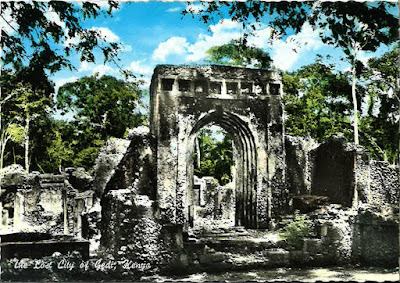"The Struve Arc is a chain of survey triangulations stretching from Hammerfest in Norway to the Black Sea, through 10 countries and over 2,820 km. These are points of a survey, carried out between 1816 and 1855 by the astronomer Friedrich Georg Wilhelm Struve, which represented the first accurate measuring of a long segment of a meridian. This helped to establish the exact size and shape of the planet and marked an important step in the development of earth sciences and topographic mapping. It is an extraordinary example of scientific collaboration among scientists from different countries, and of collaboration between monarchs for a scientific cause. The original arc consisted of 258 main triangles with 265 main station points. The listed site includes 34 of the original station points, with different markings, i.e. a drilled hole in rock, iron cross, cairns, or built obelisks."
斯特鲁维地理探测弧线
"斯特鲁维地理探测弧线是一个三角测量链,北起挪威哈 默菲斯特(Hammerfest),南至黑海,弧线穿越十个国家,长2820公里。弧线是天文学家弗里德理西·格奥尔格·威廉·斯特鲁维 (Friedrich Georg Wilhelm Struve)于1816至1855年期间进行测量的测量点,代表着人类首次对子午线长短的精确测量。这一测量帮助人类掌握了地球的确切大小和形状,是地 球科学和地形绘图学发展中的重要一步。这个弧线不仅是多国科学家通力合作的一个特例,也是多国君主为科学事业联袂协作的一个特例。原始弧线包含258个主 要三角形和265个测量站点。列入世界遗产名录的弧有34个原始测量站点,带有各种不同标记,如岩石钻孔、铁十字、堆石标或方尖石碑。"
Source UNESCO WH website http://whc.unesco.org/en/list/1187
1187-001 FUGLENAES Fuglenes,Hammerfest, Finnmark, Norway N70 40 12.00 E23 39 48.00
1187-002 LILLE-REIPAS Raipas,Alta, Finnmark, Norway N69 56 19.00 E23 21 37.00
1187-003 LOHDIZHJOKKI Luvdiidcohkka,Kautokeino, Finnmark, Norway N69 39 52.00 E23 36 8.00
1187-004 BÄLJATZ-VAARA Baelljasvarri,Kautokeino, Finnmark, Norway N69 1 43.00 E23 18 19.00
1187-005 PAJTAS-VAARA Tynnyrilaki,Kiruna, Norrbottens län, Sweden N68 15 18.00 E22 58 59.00
1187-006 KERROJUPUKKA Jupukka,Pajala, Norrbottens län, Sweden N67 16 36.00 E23 14 35.00
1187-007 PULLINKI Pullinki,Övertorneå, Norrbottens län, Sweden N66 38 47.00 E23 46 55.00
1187-008 PERRA-VAARA Perävaara,Haparanda, Norrbottens län, Sweden N66 1 5.00 E23 55 21.00
1187-009 STUOR-OIVI Stuorrahanoaivi,Enontekiö, Lapin lääni, Finland N68 40 57.00 E22 44 45.00
1187-010 AVASAKSA Aavasaksa,Ylitornio, Lapin lääni, Finland N66 23 52.00 E23 43 31.00
1187-011 TORNEA Alatornion kirkko,Tornio, Lapin lääni, Finland N65 49 48.00 E24 9 26.00
1187-012 PUOLAKKA Oravivuori,Korpilahti, Länsi-Suomen lääni, Finland N61 55 36.00 E25 32 1.00
1187-013 PORLOM II Tornikallio,Lapinjärvi, Etelä-Suomen lääni, Finland N60 42 17.00 E26 0 12.00
1187-014 SVARTVIRA Mustaviiri,Pyhtää, Etelä-Suomen lääni, Finland N60 16 35.00 E26 36 12.00
1187-015 MÄKI-PÄÄLYS Mäkipällys,Kingisepp, Leningrad Oblast, Russian Federation N60 4 27.00 E26 58 11.00
1187-016 HOGLAND, Z Gogland, Tochka Z,Kingisepp, Leningrad Oblast, Russian Federation N60 5 7.00 E26 57 40.00
1187-017 WOIBIFER Võivere,Avanduse, Lääne-Viru, Estonia N59 3 28.00 E26 20 16.00
1187-018 KATKO Simuna,Avanduse, Lääne-Viru, Estonia N59 2 54.00 E26 24 51.00
1187-019 DORPAT Tartu Observatory,Tartu, Tartu, Estonia N58 22 44.00 E26 43 12.00
1187-020 SESTU-KALNS Ziestu,Sausneja, Region of Madona, Latvia N56 50 24.00 E25 38 12.00
1187-021 JACOBSTADT Jekabpils,Town Jekabpils, Region Jekabpils, Latvia N56 30 5.00 E25 51 24.00
1187-022 KARISCHKI Gireišiai,Panemunelis, Northern Lithuania, Lithuania N55 54 9.00 E25 26 12.00
1187-023 MESCHKANZI Meškonys,Nemencine, Eastern Lithuania, Lithuania N54 55 51.00 E25 19 0.00
1187-024 BERESNÄKI Paliepiukai,Nemežis, Eastern Lithuania, Lithuania N54 38 4.00 E25 25 45.00
1187-025 TUPISCHKI Tupishki,Oshmyany, Grodno Oblast, Belarus N54 17 30.00 E26 2 43.00
1187-026 LOPATI Lopaty,Zelva, Grodno Oblast, Belarus N53 33 38.00 E24 52 11.00
1187-027 OSSOWNITZA Ossovnitsa,Ivanovo, Brest Oblast, Belarus N52 17 22.00 E25 38 58.00
1187-028 TCHEKUTSK Chekutsk,Ivanovo, Brest Oblast, Belarus N52 12 28.00 E25 33 23.00
1187-029 LESKOWITSCHI Leskovichi,Ivanovo, Brest Oblast, Belarus N52 9 39.00 E25 34 17.00
1187-030 RUDY Rudi,Rudi, Soroca Judetul, Republic of Moldova N48 19 8.00 E27 52 36.00
1187-031 KATERINOWKA Katerinowka,Antonivka, Khmelnytskiy region, Ukraine N49 33 57.00 E26 45 22.00
1187-032 FELSCHTIN Felschtin,Hvardiiske, Khmelnytskiy region, Ukraine N49 19 48.00 E26 40 55.00
1187-033 BARANOWKA Baranowka,Baranivka, Khmelnytskiy region, Ukraine N49 8 55.00 E26 59 30.00
1187-034 STARO-NEKRASSOWKA Stara Nekrasivka, Nekrasivka, Odessa region, Ukraine N45 19 54.00 E28 55 41.00
Courtesy of Michaela0705 from postcrossing forum
1187-001 FUGLENAES Fuglenes,Hammerfest, Finnmark, Norway
card sent from Germany with stamp showing anther UNESCO sites of Jasmund National Park

1187-011 TORNEA Alatornion Kirkko, Tornio, Lapin lääni, Finland
 Courtesy of maneij from postcrossing forum
Courtesy of maneij from postcrossing forum
1187-012 PUOLAKKA Oravivuori Korpilahti, Länsi-Suomen lääni, Finland
Courtesy of doncreatore from postcrossing forum







































